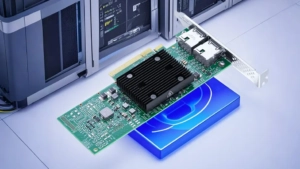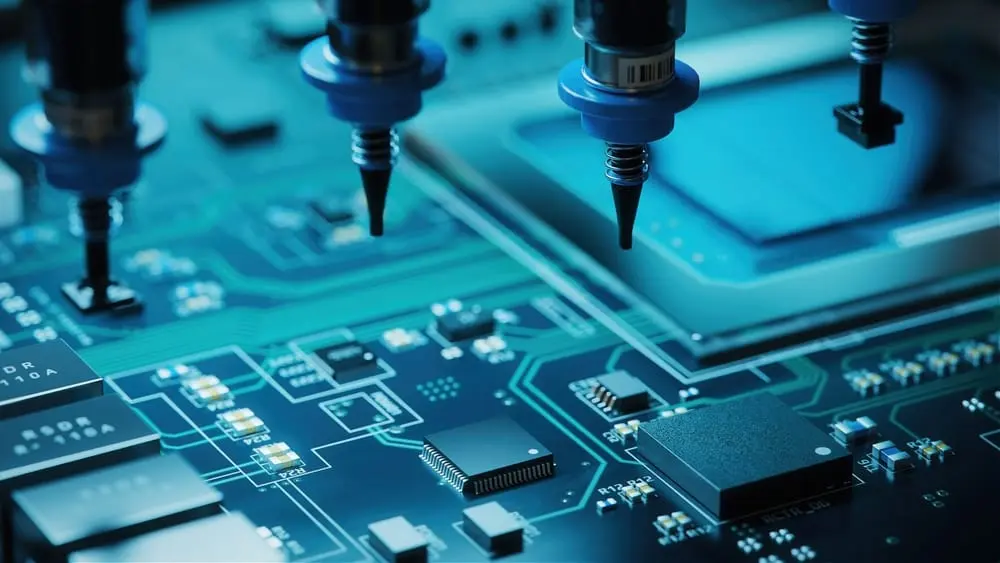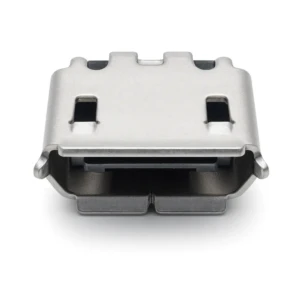Intelligent Device Manufacturing in SMT: The Complete Next-Generation Production Paradigm
What Is IDM in SMT represents a transformative question for electronics manufacturing professionals seeking to optimize their surface mount technology processes. While commonly interpreted as Intelligent Device Manufacturing, IDM in the SMT context actually encompasses a more sophisticated dual concept: Integrated Device Manufacturing and Intelligent Data Management. This comprehensive framework merges advanced process control, real-time analytics, and automated optimization to create a responsive, self-correcting production environment that fundamentally transcends traditional SMT methodologies.
The Dual Nature of IDM: Beyond Acronyms to Operational Excellence
Integrated Device Manufacturing: The Vertical Integration Advantage
In its original conception, Integrated Device Manufacturing refers to companies that maintain control over the entire semiconductor production chain—from silicon wafer fabrication to final component packaging and testing. When applied to SMT operations, this philosophy expands to encompass:
- Unified Process Control: Synchronization between stencil printing, component placement, and reflow processes under a single command architecture
- Material Integration: Co-development of substrates, solder pastes, and components to optimize mutual performance characteristics
- Supply Chain Synchronization: Real-time inventory management that aligns component delivery with production scheduling
- Cross-Process Quality Assurance: Implementation of quality metrics that span the entire manufacturing pathway rather than isolated inspection points
Intelligent Data Management: The Cognitive Manufacturing Nervous System
The more technologically advanced interpretation of IDM in SMT environments centers on Intelligent Data Management—a comprehensive approach to collecting, analyzing, and acting upon production data. This represents the operational intelligence layer that transforms conventional SMT lines into cognitive manufacturing systems:
- Machine Learning-Driven Process Optimization: Self-adjusting parameters based on historical performance data and real-time conditions
- Predictive Quality Analytics: Anticipation of defects before they occur through multivariate pattern recognition
- Automated Traceability Systems: Complete digital thread from component lot to finished board assembly
- Closed-Loop Correction Mechanisms: Immediate process adjustments in response to dimensional, thermal, or placement deviations
Core Technological Components of IDM Systems
Advanced Sensor Networks and IoT Infrastructure
Modern IDM implementation relies on distributed sensor systems that capture unprecedented granularity of process data:
- Multi-spectral Vision Systems: Combining standard optical, infrared, and X-ray inspection in unified platforms
- Thermal Profiling Arrays: Distributed temperature monitoring throughout reflow processes with 0.1°C resolution
- Vibration and Acoustic Monitoring: Detection of mechanical deviations in placement equipment before they impact accuracy
- Environmental Sensing: Continuous measurement of ambient conditions (humidity, temperature, particulate counts) affecting process stability
Computational Architecture and Analytics Platforms
The intelligence behind IDM requires sophisticated computational resources:
- Edge Computing Nodes: Local processing of time-sensitive data for immediate process adjustments
- Central Analytics Hub: Aggregation of cross-line data for strategic optimization and trend analysis
- Digital Twin Simulation: Virtual modeling of SMT processes enabling predictive scenario planning
- Anomaly Detection Algorithms: Identification of subtle process deviations invisible to traditional SPC methods
Operational Benefits and Performance Metrics
Quality Enhancement Through Intelligent Process Control
Implementation of IDM methodologies typically demonstrates measurable quality improvements:
- First-Pass Yield Increase: Documented improvements of 12-18% through reduced process variation
- Defect Escape Reduction: 70-85% decrease in defects reaching final test stages
- Process Capability (Cpk) Enhancement: Movement from 1.33 to 1.67+ capability indices through reduced variation
- Mean Time Between Failure (MTBF) Extension: 40-60% improvement in field reliability through superior process control
Operational Efficiency and Resource Optimization
The economic impact of IDM implementation extends beyond quality metrics:
- Equipment Utilization Rates: 15-25% improvement through predictive maintenance and reduced downtime
- Changeover Time Reduction: 45-65% faster product transitions through automated recipe management
- Material Consumption Optimization: 8-12% reduction in solder paste and component waste
- Direct Labor Productivity: 20-30% improvement through automated monitoring and exception-based management
Implementation Roadmap: Transitioning to IDM-Enabled SMT Operations
Foundation Assessment and Readiness Evaluation
Successful IDM adoption begins with comprehensive current-state analysis:
- Technology Gap Assessment: Evaluation of existing equipment capabilities and data accessibility
- Organizational Readiness: Assessment of team competencies and change management requirements
- Infrastructure Evaluation: Audit of network capabilities, storage systems, and computational resources
- ROI Modeling: Development of business case with prioritized implementation phases
Phased Implementation Strategy
A structured approach to IDM deployment ensures sustainable success:
- Phase 1: Data Foundation (Months 1-4): Implementation of sensor networks and data aggregation platforms
- Phase 2: Analytical Capability (Months 5-8): Deployment of machine learning algorithms and visualization tools
- Phase 3: Process Integration (Months 9-12): Closed-loop control implementation and cross-process optimization
- Phase 4: Cognitive Expansion (Months 13+): Full predictive capability and autonomous optimization
Technical Challenges and Mitigation Strategies
Data Integration and System Interoperability
The heterogeneous nature of SMT equipment presents significant integration challenges:
- Legacy Equipment Connectivity: Retrofit solutions for machines lacking modern data interfaces
- Protocol Standardization: Implementation of Hermes, CFX, or other industry standards for machine communication
- Data Normalization Architectures: Development of unified data models across disparate equipment types
- Network Infrastructure Upgrades: Bandwidth and latency optimization for real-time data transmission
Organizational Adaptation and Skill Development
The human dimension of IDM implementation requires deliberate strategy:
- Cross-Functional Team Development: Integration of process engineering, data science, and operations expertise
- Progressive Skill Enhancement: Structured training programs transitioning from manual to analytical competencies
- Decision Authority Redefinition: Evolution from experience-based to data-informed decision frameworks
- Change Management Protocols: Systematic approaches to addressing organizational resistance
Future Trajectory: The Evolution of IDM in SMT
Emerging Technologies Shaping Next-Generation IDM
The continuing evolution of IDM incorporates several disruptive technologies:
- Quantum-Inspired Computing: Application of quantum algorithms for complex optimization problems in placement and routing
- Explainable AI (XAI): Transparent artificial intelligence enabling engineer trust in automated decisions
- Distributed Ledger Technology: Blockchain-enabled component traceability and quality verification
- Augmented Reality Interfaces: Hands-free access to process data and analytical insights for floor personnel
Strategic Implications for Electronics Manufacturing
The long-term impact of IDM adoption extends beyond operational improvements:
- Business Model Evolution: Transition from volume-based to capability-based competitive differentiation
- Supply Chain Transformation: Development of cognitive supply networks with predictive responsiveness
- Innovation Acceleration: Reduced time-to-market through rapid process optimization for new technologies
- Sustainability Enhancement: Significant reduction in energy consumption and material waste through precision manufacturing
Comparative Analysis: IDM Versus Traditional SMT Approaches
The fundamental differentiators between IDM-enabled and conventional SMT operations manifest across multiple dimensions:
- Reactive vs. Predictive Maintenance: Traditional approaches respond to equipment failures; IDM anticipates and prevents them
- Statistical vs. Cognitive Process Control: Conventional SPC detects deviations after they occur; IDM prevents deviations through continuous adaptation
- Isolated vs. Integrated Optimization: Traditional methods optimize individual process steps; IDM optimizes the entire manufacturing system
- Experience-Based vs. Data-Driven Decision Making: Conventional approaches rely on technician expertise; IDM augments human judgment with algorithmic insight
Conclusion: IDM as the New Foundation for Competitive SMT Manufacturing
Understanding What Is IDM in SMT transcends academic terminology clarification—it represents recognition of a fundamental shift in manufacturing philosophy. The integration of intelligent data management with integrated process control creates a manufacturing ecosystem characterized by unprecedented responsiveness, precision, and efficiency. For electronics manufacturers facing increasingly complex products, compressed development cycles, and intense global competition, IDM implementation transitions from strategic advantage to operational necessity.
The journey toward full IDM implementation requires significant investment in technology, infrastructure, and human capabilities. However, the demonstrated improvements in quality, efficiency, and reliability deliver compelling returns that justify this transformation. As the electronics industry continues its relentless advancement toward higher densities, faster speeds, and greater complexity, IDM methodologies provide the essential framework for manufacturing excellence in the coming decade.
Forward-thinking manufacturers who embrace this paradigm today position themselves not merely to survive the industry’s evolution, but to actively shape its future—transforming the theoretical potential of Industry 4.0 into tangible competitive advantage on the SMT production floor.








